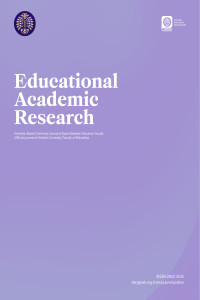About the Educational Academic Research
Educational Academic Research is a peer-reviewed, open-access, online-only journal published by Atatürk University. The journal is published quarterly in both Turkish and English, with articles released in March, June, September, and December.
Journal History
As of 2022, the journal has changed its title to Educational Academic Research.
Previous Title (2000-2021)
Atatürk Üniversity Journal of Kazım Karabekir Education Faculty/Atatürk Üniversitesi Kazım Karabekir Eğitim Fakültesi Dergisi
ISSN: 1302-3241
EISSN: 2687-2196
Current Title (2022-…)
Educational Academic Research
EISSN: 2822-3535
2024 - Issue: 52
Systematic Reviews and Meta Analysis
7. Question Tree Technique in Science Education; Sample ApplicationContent of this journal is licensed under a Creative Commons Attribution NonCommercial 4.0 International License


